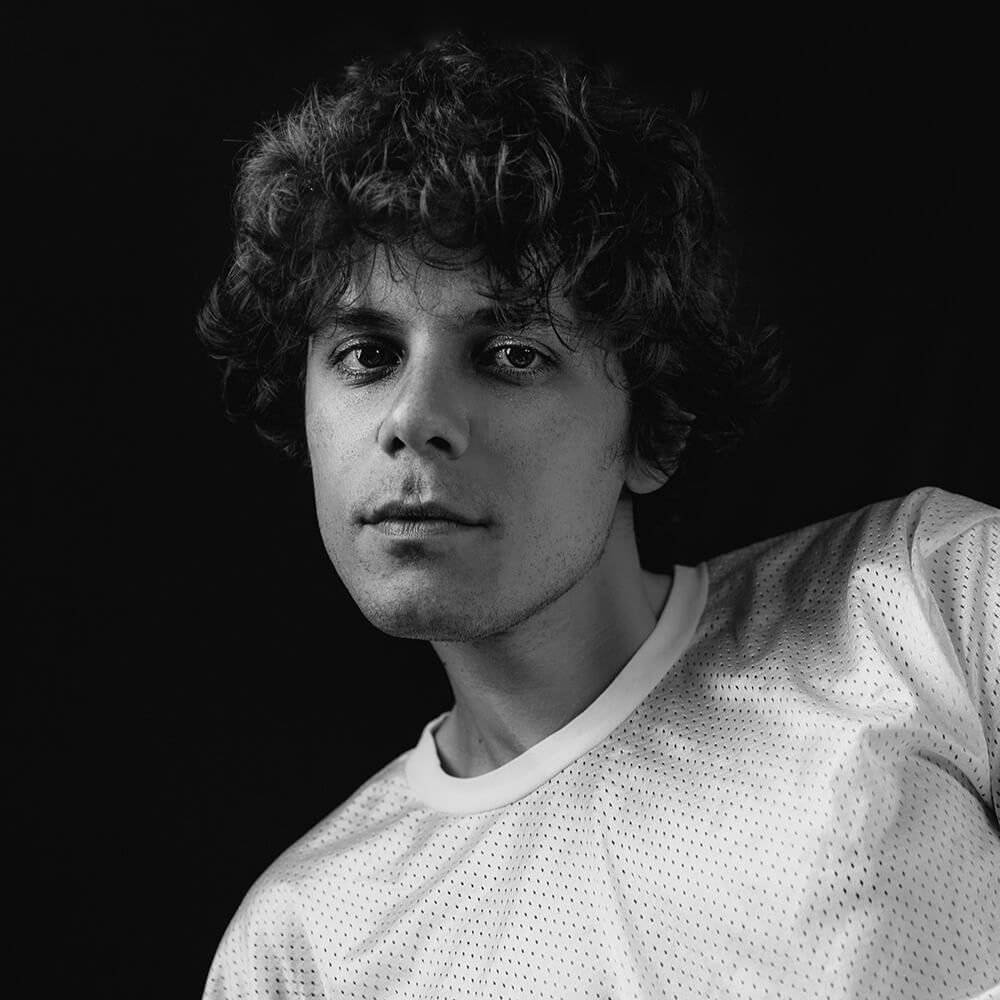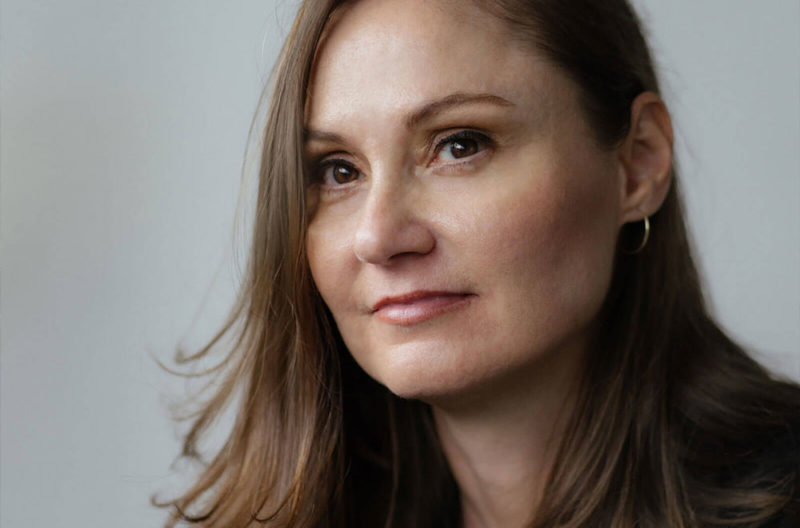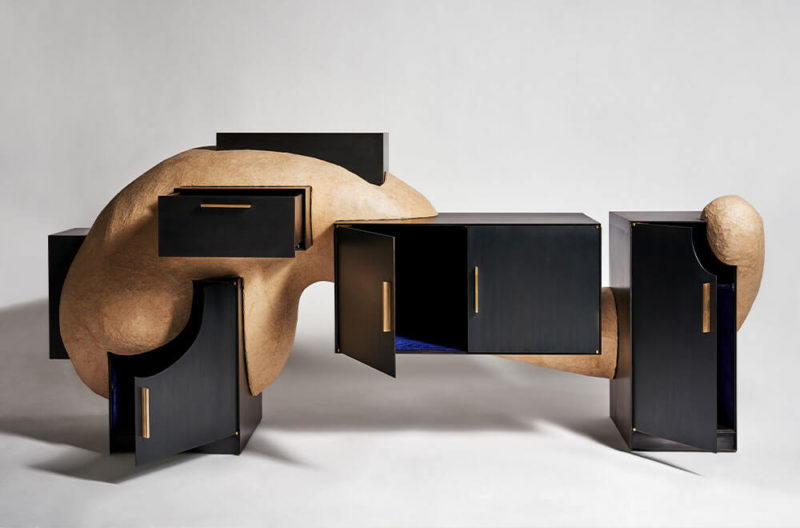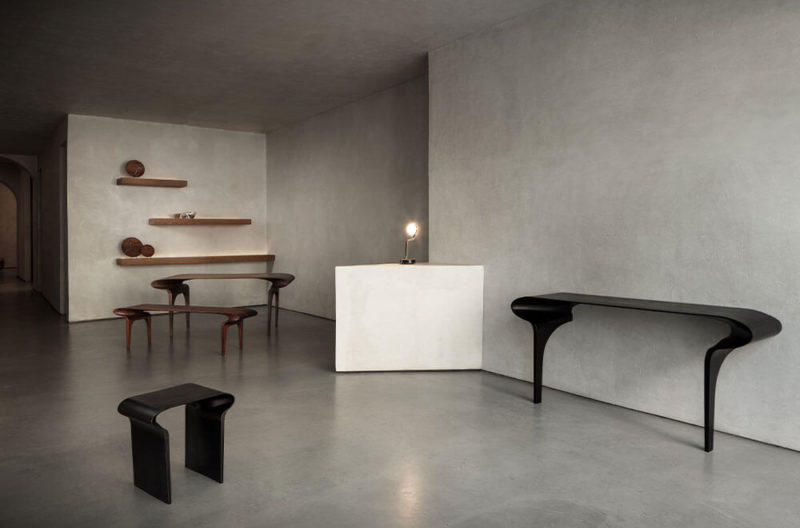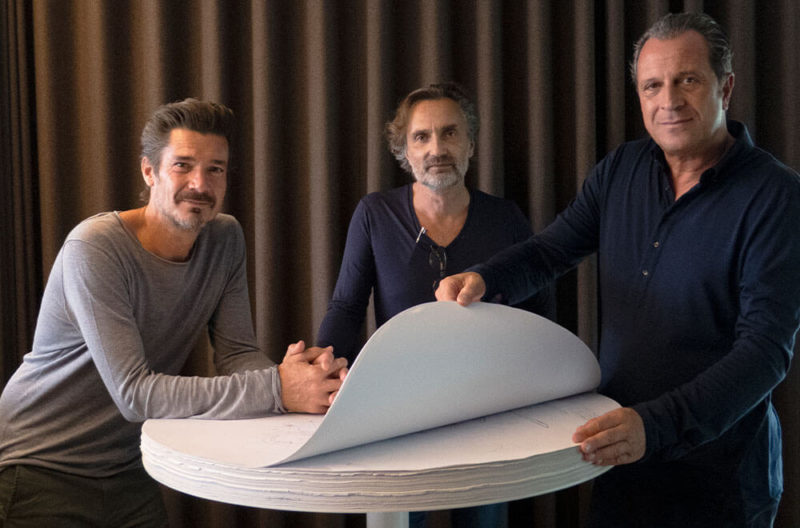Art|Basel Miami Beach / Atelier Caracas
The duo launch a new series of chairs – ready for chance encounters and accessible for young collectors.
Radical Semantics at ‘Untitled Art’, Art Basel Miami Beach
November 30th – December 4th, 2021
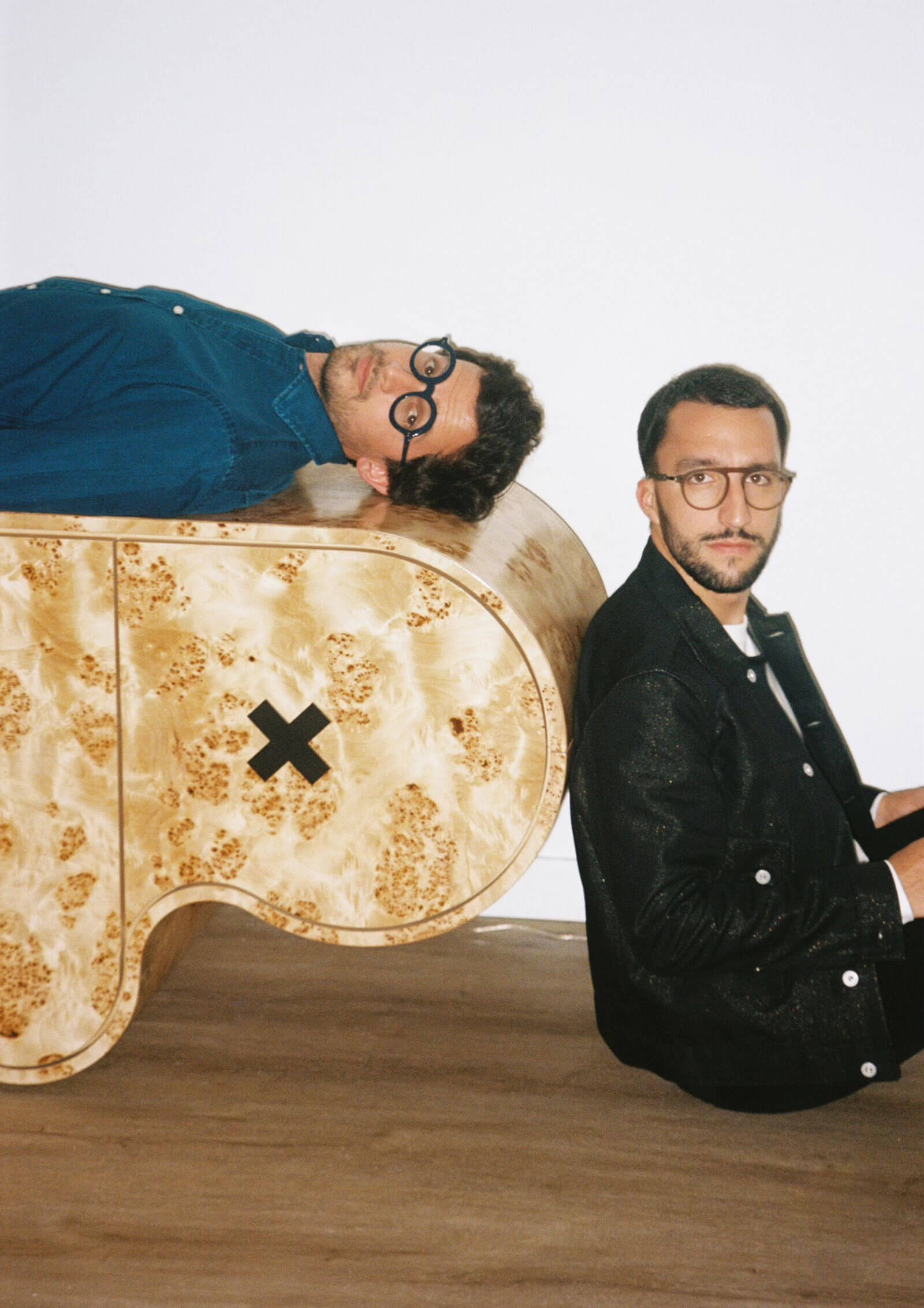
Julio Kowalenko and Rodrigo Armas of Atelier Caracas
COURTESY: Atelier Caracas
SIX YEARS AGO, Atelier Caracas founders Rodrigo Armas and Julio Kowalenko had set up an architecture studio with an MDF table and two computers at Armas’s family restaurant. Besides a pile of business cards and a client that later fell through, they barely had a business plan. Currently, the duo oversees a team of five at their garden-view studio overlooking mount Pico Naiguatá just outside of Caracas.
Armas and Kowalenko have since designed a school, a rehabilitation centre and a spa in locations across Venezuela, and last year they decided to dip their toes into industrial design with the furniture line, ‘Gardenia’. In this year’s ‘Untitled Art’ fair during Art Basel Miami Beach, they are collaborating with Miami’s own Studio Boheme to unveil a set of nine chairs, titled ‘Radical Semantics’, at Hayworth Co’s booth.

Atelier Caracas for Studio Boheme, ‘Radical Semantics’ collection, 2021
COURTESY: Atelier Caracas
The duo knew each other while studying at the Central University of Venezula, “but only after graduation, we realised that we are very different people who happen to think alike,” Armas tells The Design Edit. They initially launched an Instagram account where they shared architectural drawings, but architecture and design, just like many sectors in Venezuela around 2017, was dormant and most construction projects had been put on hold. Their posts were getting feedback from studios in Europe while their country was in social turmoil. “During a massive intellectual migration, we decided to stay and use this opportunity as a blank canvas to create something new,” Kowalenko adds.
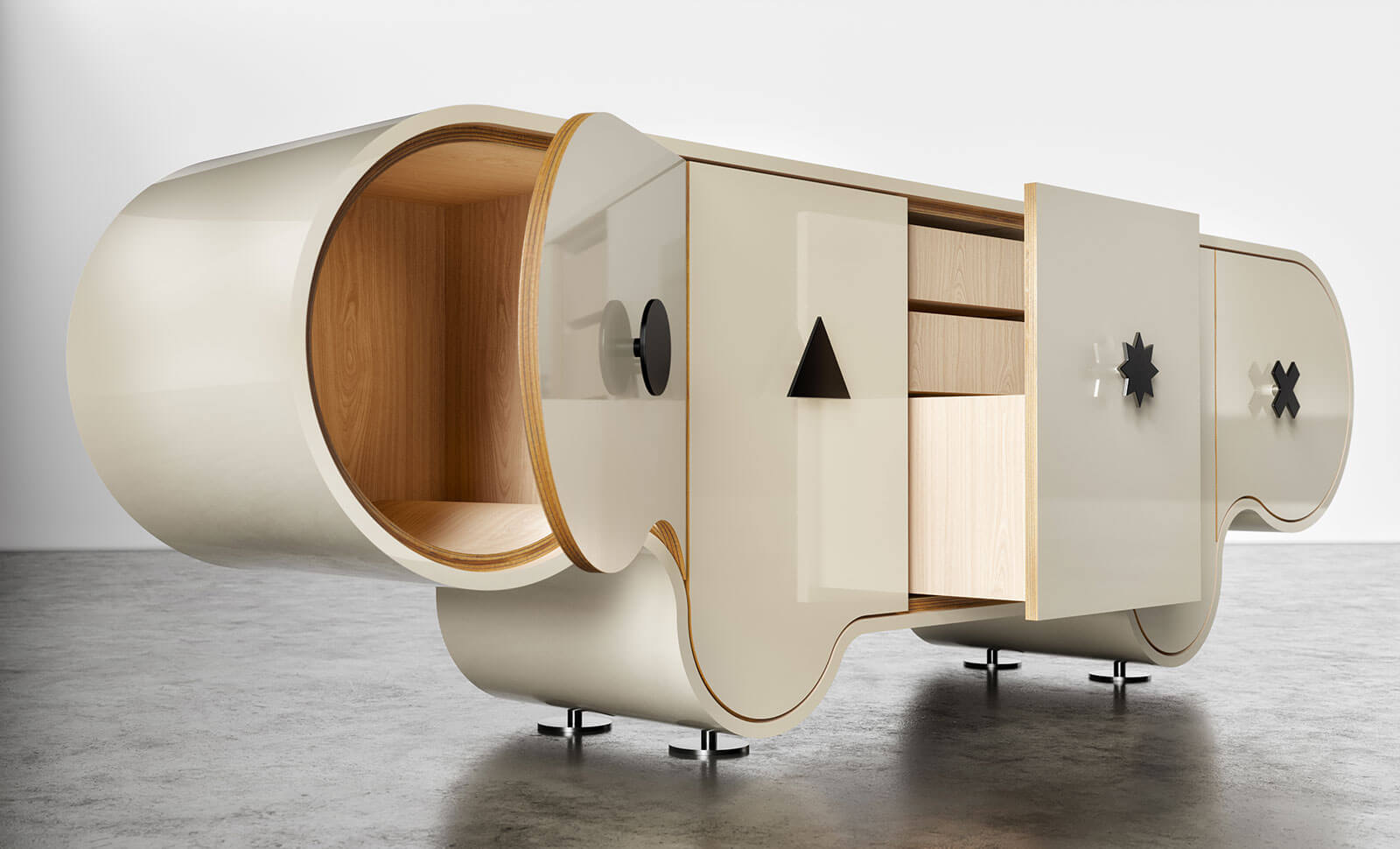
Atelier Caracas, ‘Gardenia’ credenza (white), 2021
COURTESY: Atelier Caracas
The decision paid off and the duo got a call from a former professor to renovate Colegio Integral El Ávila, a pre-school in Caracas. They called the project ‘Parasite Project’, as they set out to blend the existing architecture with new organisms – meaning their whimsical design touches. Thanks to their innovative solutions across the school, such as a multipurpose cafeteria, and a quirky use of the colour yellow in contrast to the dominant mute tones, the project received industry attention and global press.
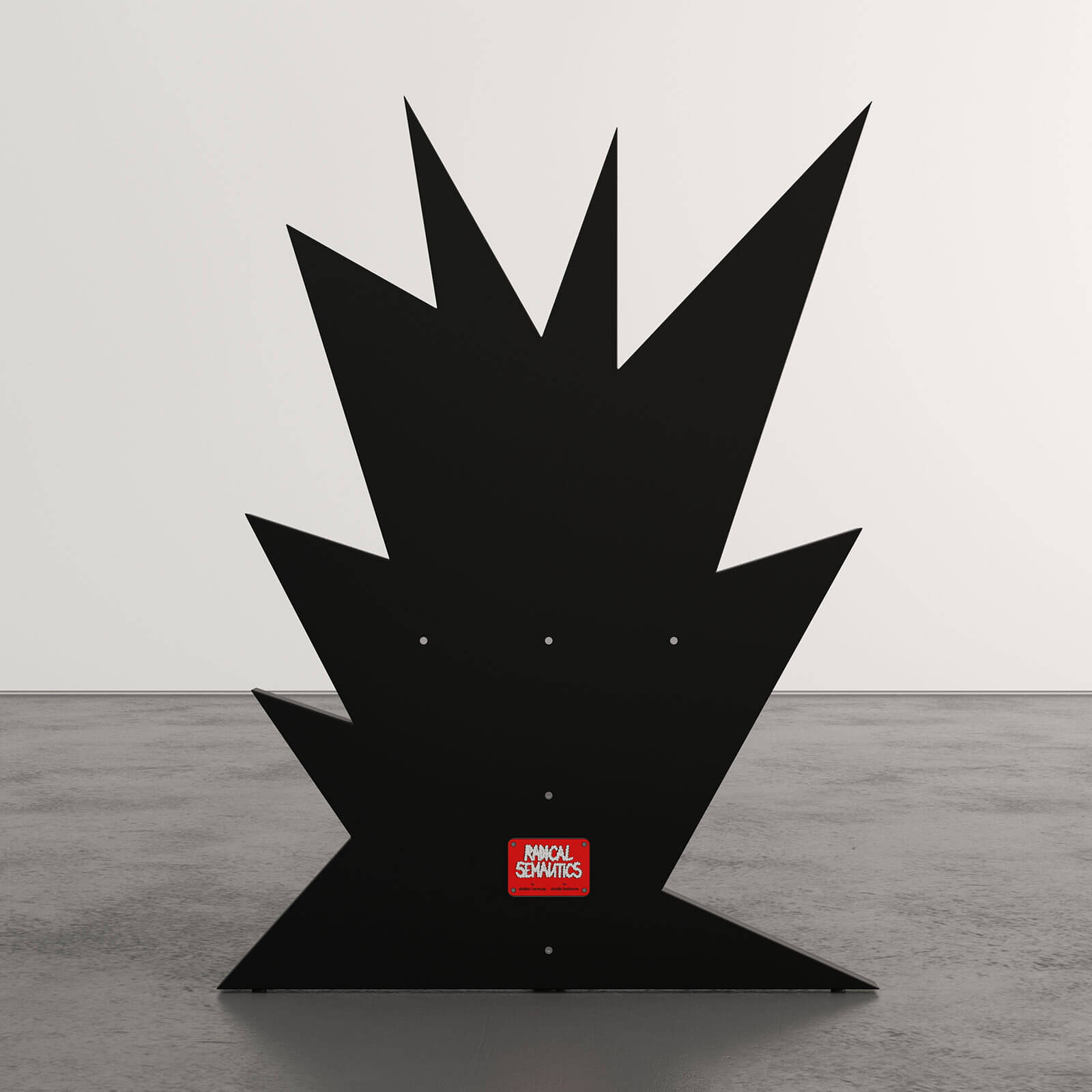
Atelier Caracas for Studio Boheme, ‘N.5 Kaboom!’ from the Radical Semantics series, 2021
COURTESY: Atelier Caracas
A bold “This is not architecture” motto on their landing webpage explains the duo’s philosophy in creating spaces. “We are not just going to design someone a house – but we will sit with them and talk about what it means to live inside a space,” Kowalenko explains. “We are interested in humanising architecture.” This soulful approach to making has also guided them towards their foray into designing objects. “Every object has a DNA and we extract that element to transform into design,” Armas says. This excavation of an essence has led them to craft a playful approach to heritage. Their first furniture line, ‘Gardenia’, stemmed from two main inspirations: children’s toys and the ornate forged iron chairs usually found in the home of every Venezuelan grandmother.
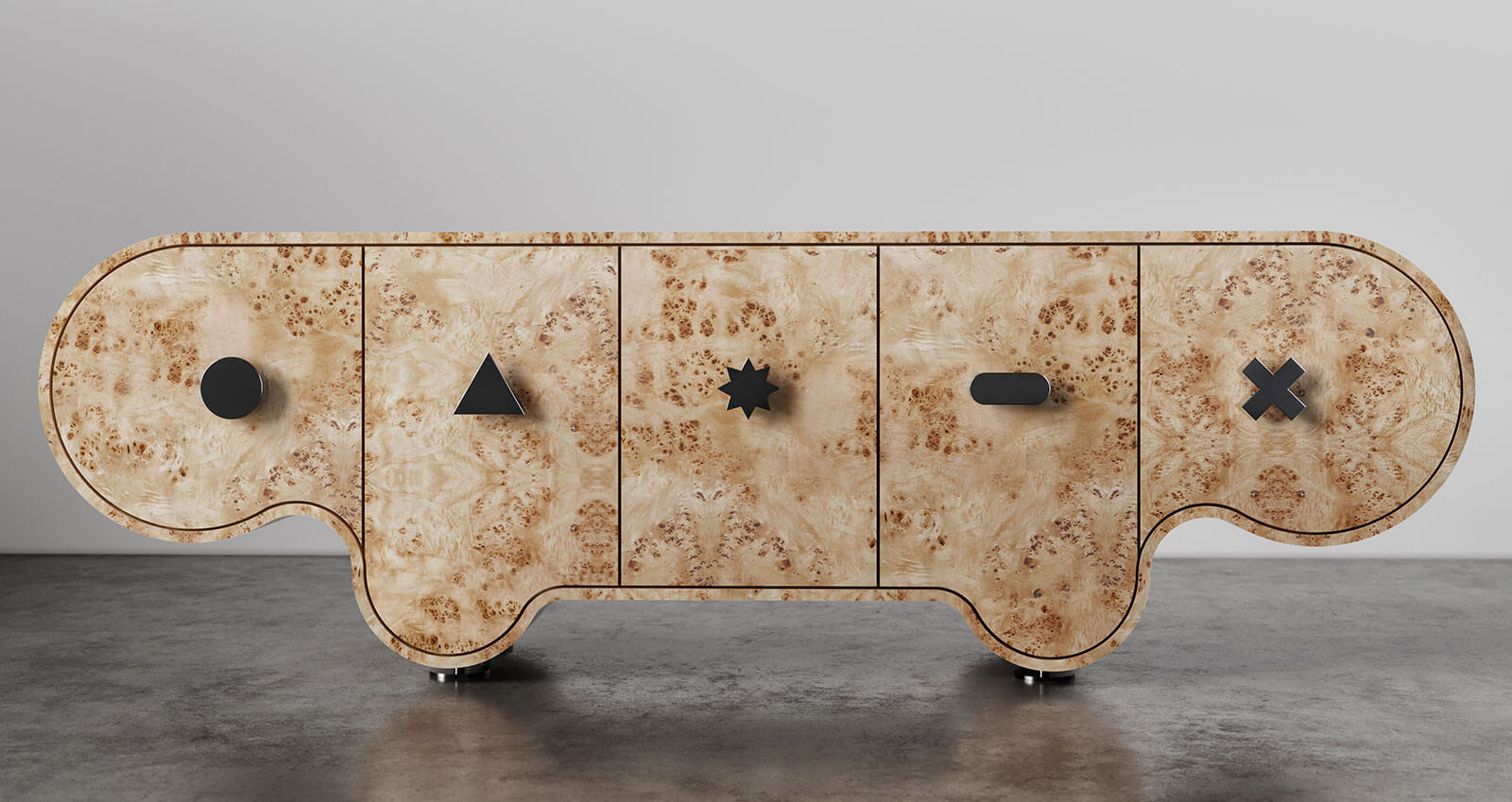
Atelier Caracas, ‘Gardenia’ credenza, 2021
COURTESY: Atelier Caracas
Their collaboration with Studio Boheme began with a few fire emojis, which they sent out to the collective’s founder Carlos Mancin on Instagram. The duo and Mancin went to the same design school in Caracas and had remained friends on social media. “After realising that he runs a design collective in Miami, we had to reach out to him,” Armas says. Their offer to collaborate led to the first of prototype of a large scale wooden credenza.
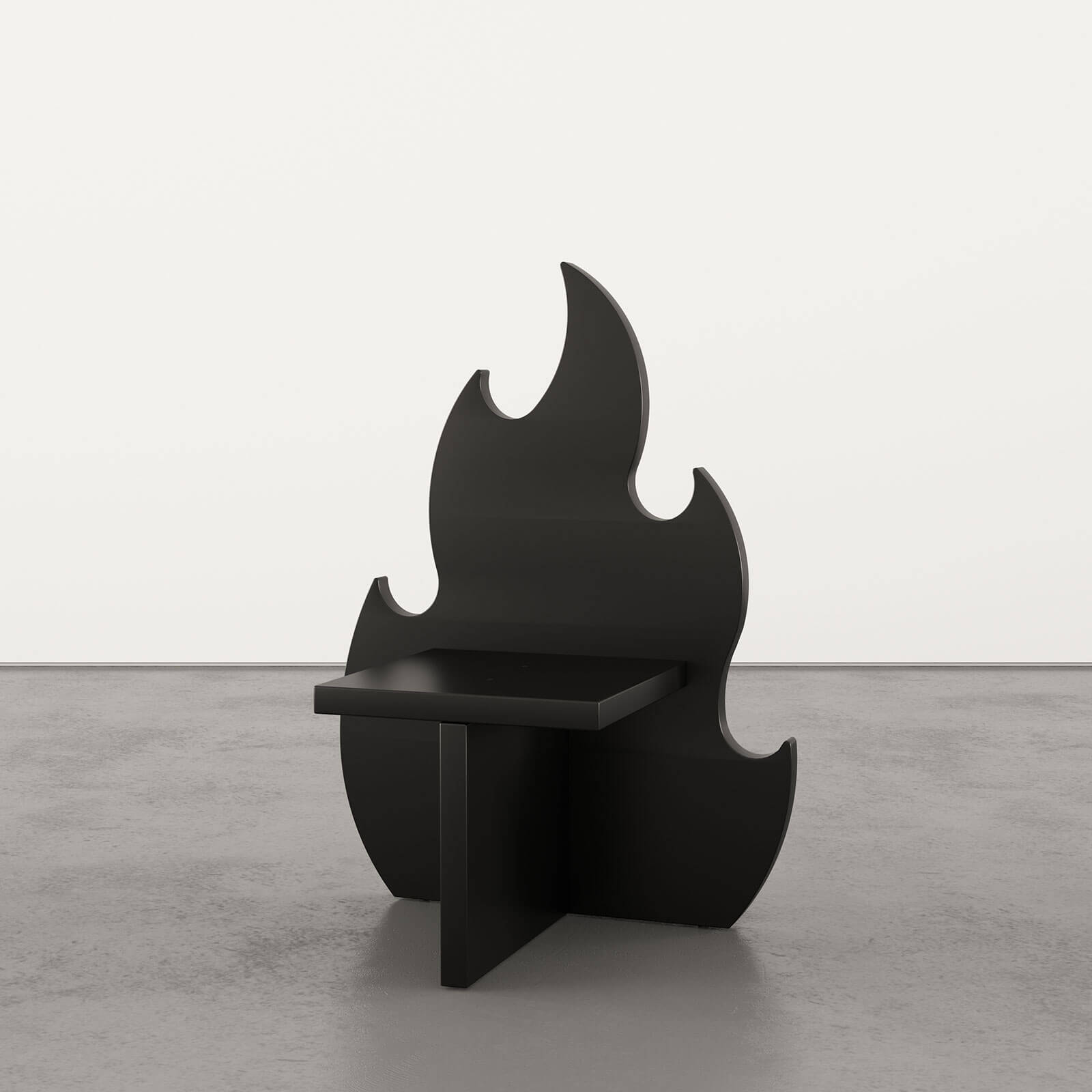
Atelier Caracas for Studio Boheme, ‘N.4 Fire’, from the Radical Semantics series, 2021
COURTESY: Atelier Caracas
Their take on the nostalgic cabinet is the result of an ambitious production strategy, conceived during the height of the pandemic. Achieving the impossibly smooth curves on a lacquered finish on a large scale initially seemed impossible – many American fabricators suggested a generic CNC cutting – but the duo and Mancin were in search of a rustic handmade finish. Their research led them to a Mexican fabricator in Hollywood, Los Angeles. He masterfully crafted slabs of wood in gradually lessening scales in a fashion that the duo explains with the metaphor of “Tobia Scarpa [the highly successful and prolific Italian industrial designer] building a boat.”
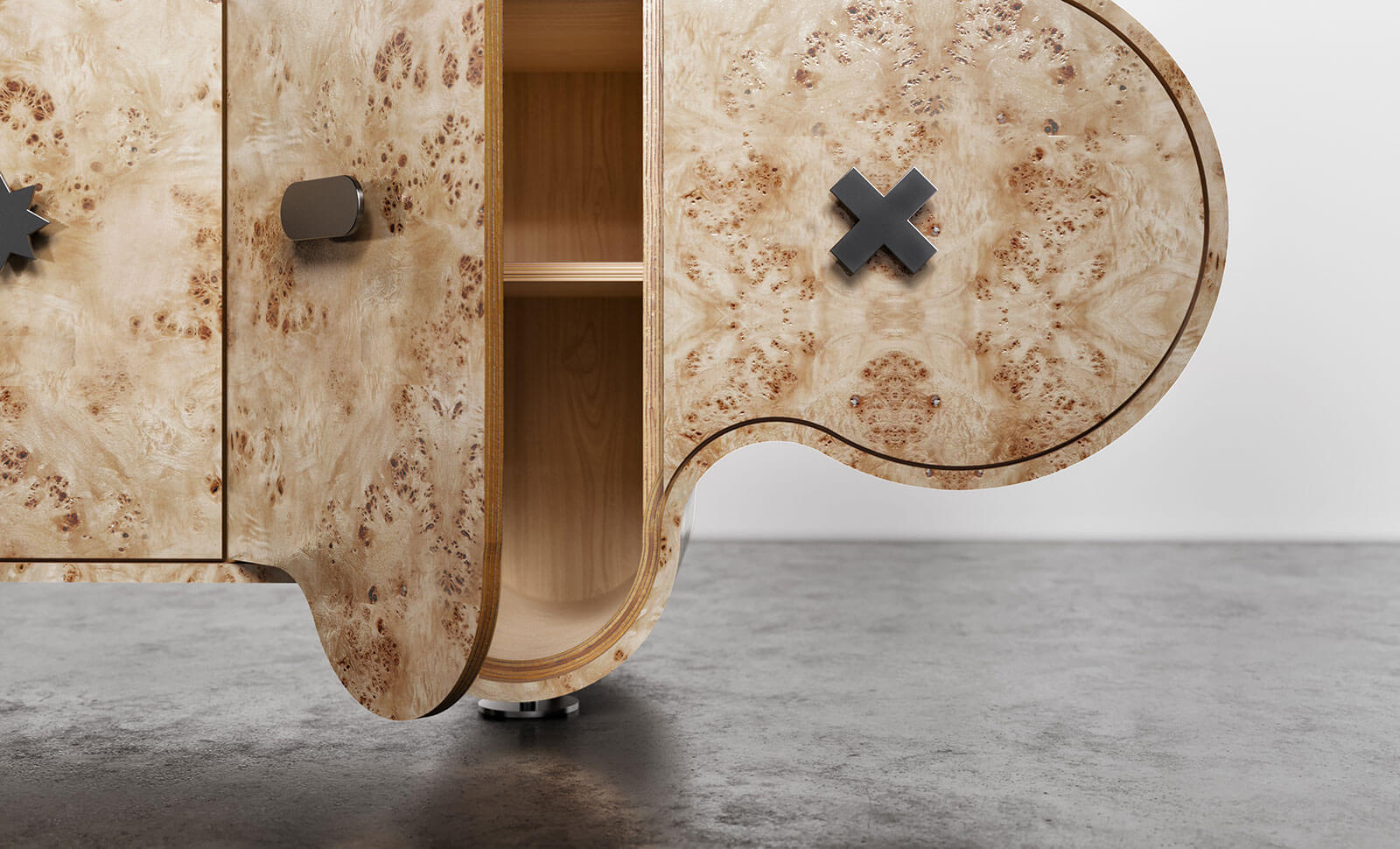
Atelier Caracas, ‘Gardenia’ credenza, 2021 (detail)
COURTESY: Atelier Caracas
“’Gardenia’ was about challenging the monotony that is favoured by the current minimalist trends,” Armas says and his partner adds: “How about the heritage?” The duo does not shy away from embracing the somewhat kitsch domestic aesthetic that they were exposed to growing up. From the local Spanish-influenced colonial architecture to the ’90s Nintendo frenzy, the different cultural influences that have defined their visual lexicon find their way into their design language.
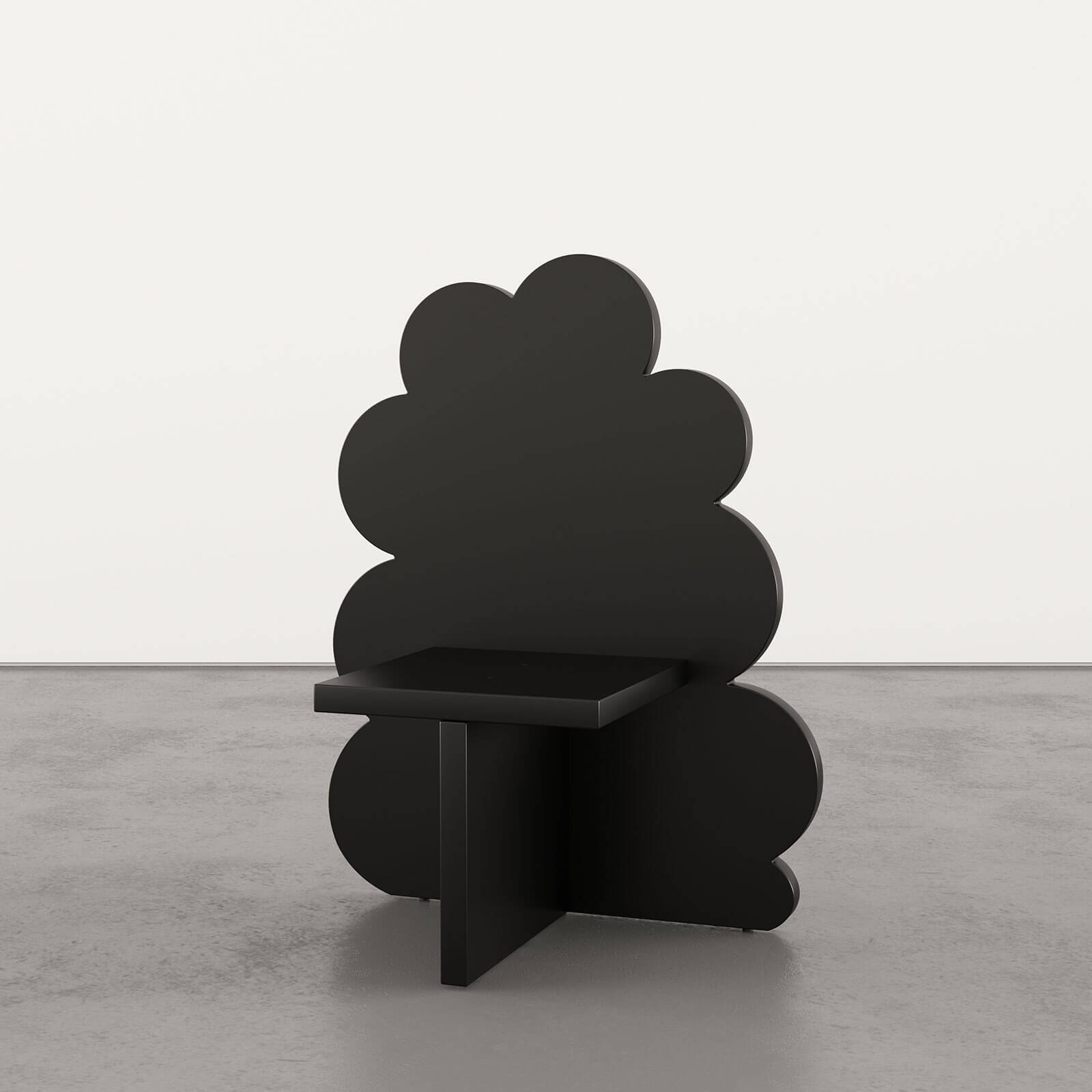
Atelier Caracas for Studio Boheme, ‘N.9 Cloud 9’ from the Radical Semantics series, 2021
COURTESY: Atelier Caracas
When strategic consultancy Hayworth Co entered this year’s ‘Untitled’ as a nomadic art and design initiative, the founder Ellie Hayworth looked no further than Atelier Caracas for a collaboration that blurs the distinction between art and functional objects. “The idea was to create something that is not concerned with the difference between an artistic statement and everyday use,” says Hayworth.
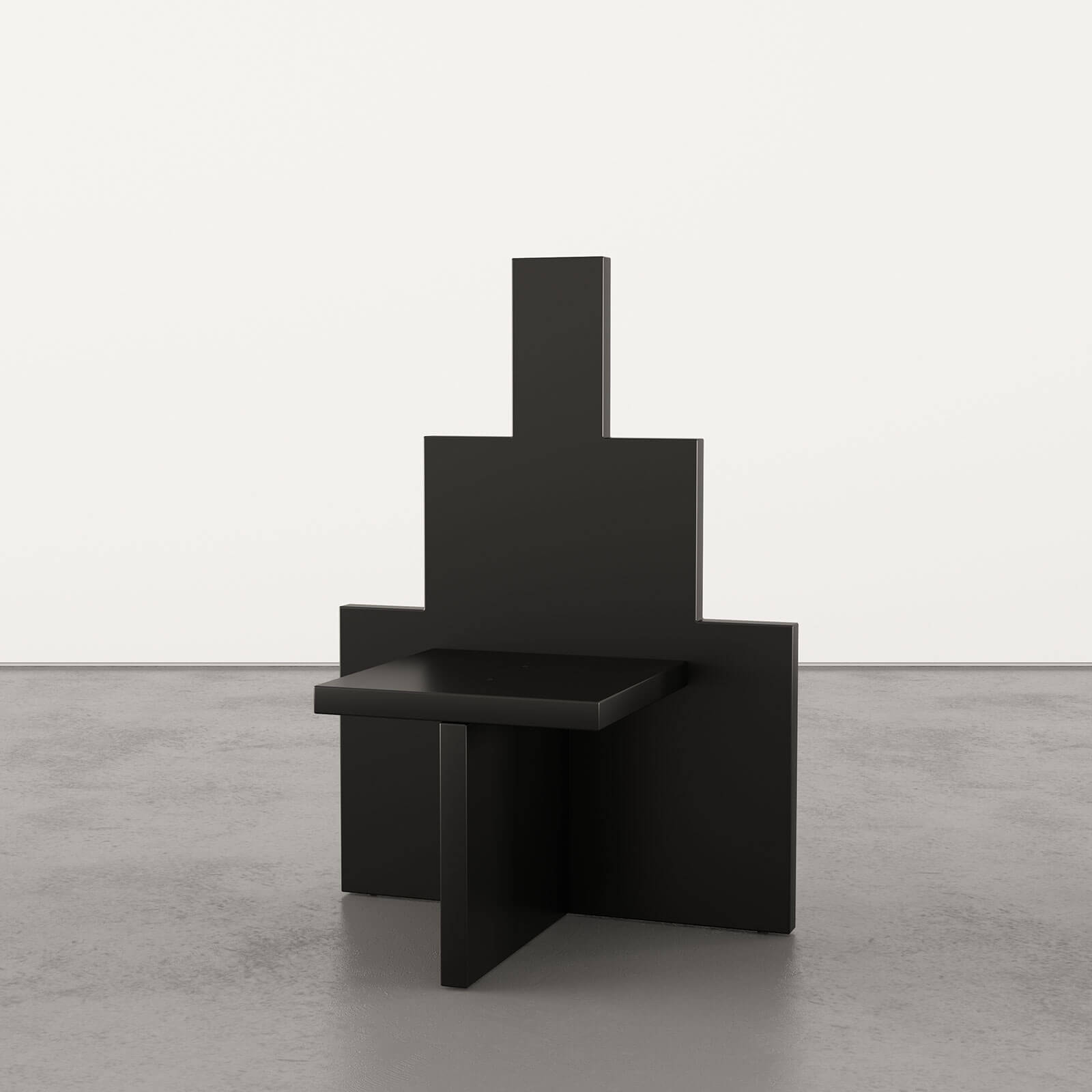
Atelier Caracas for Studio Boheme, ‘N.1 Babylon’ from the Radical Semantics series, 2021
COURTESY: Atelier Caracas
This determination to blur boundaries reflects Atelier Caracas’s vision: “We share the philosophy to democratise design and see it through a horizontal perspective, rather than hierarchical.” Kowalenko says. ‘Radical Semantics’ is produced in large editions with an accessible price point for the young collectors that the art fair is famous for attracting. Beyond that, “We are architects who think like artists,” says Kowalenko. For a synthesis of analytical thinking and unrestrained imagination, the duo have ready to hand their own digital folder of ample inspirations. The pool of imagery in their computers includes American conceptual artist Bruce Conner’s iconic collage ‘Bombhead’ (1989/2002), Gio Ponti’s historic building Villa Planchart in Caracas, the fire at the Buckminster Fuller-designed Biosphere building in Montreal in 1976, or Irving Penn’s famous photograph of Miles Davis’s hand, ‘The Hand of Miles Davis, New York’ (1986).
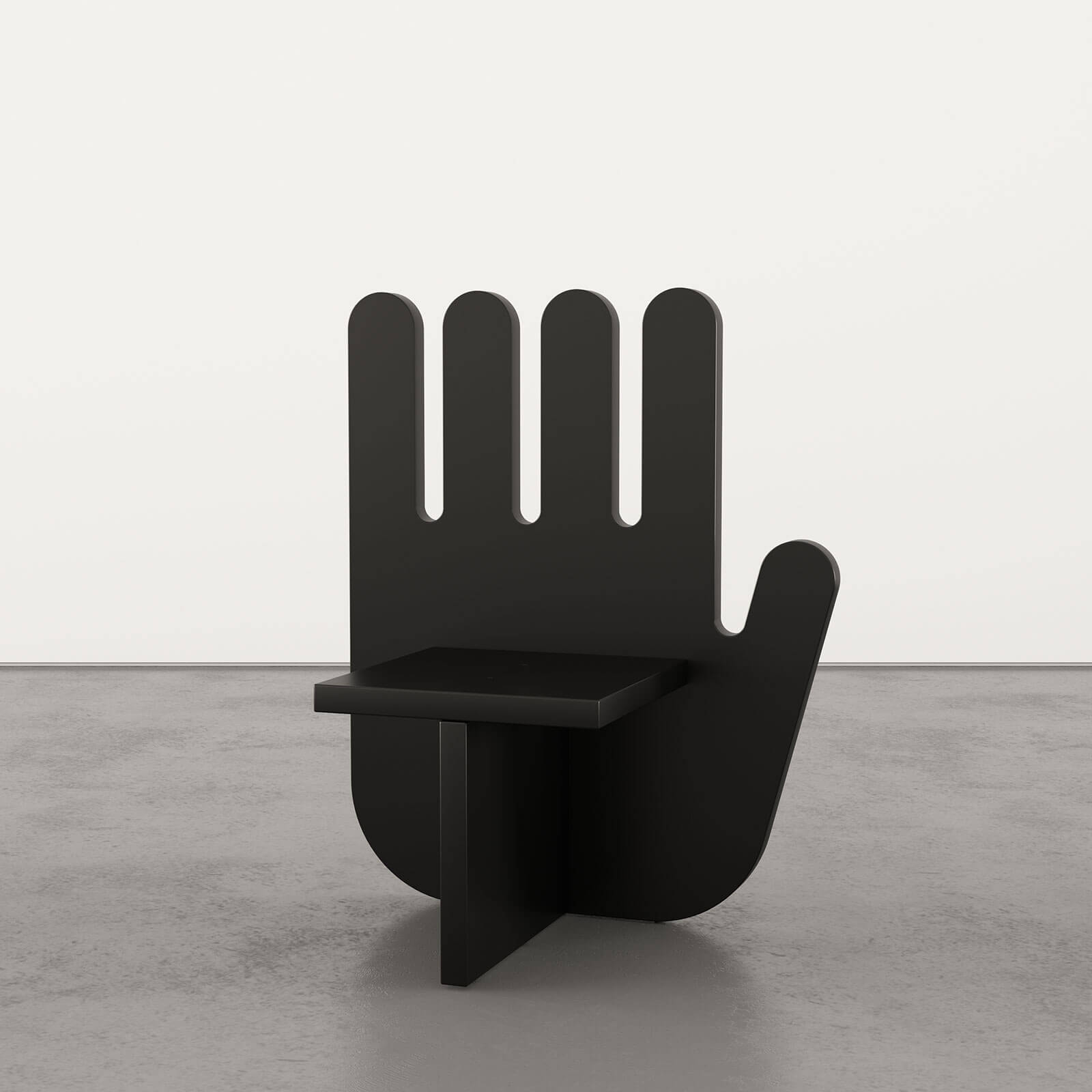
Atelier Caracas for Studio Boheme, ‘N.6 Hand’ from the Radical Semantics series, 2021
COURTESY: Atelier Caracas
In fact, hands make up a substantial portion of their inspirational resources, from a picture of Michael Jordan making a “three-peat” hand gesture, to Le Corbusier’s ‘Open Hand Monument’ in Chandigarh. “We filter and summarise these references,” Armas explains. “We are not afraid of quoting from architecture itself, as well as music, pop culture or art.”
Two sets of nine chairs will be installed throughout the aisles of ‘Untitled’’s tent by the Atlantic ocean. Unlike the nonnegotiable hands-off policy of art fairs, the public is welcome to engage with the furniture and sit on a cloud-backed chair, or another one inspired by Ettore Sottsass’s bubbly furniture from the 1970s and ’80s.
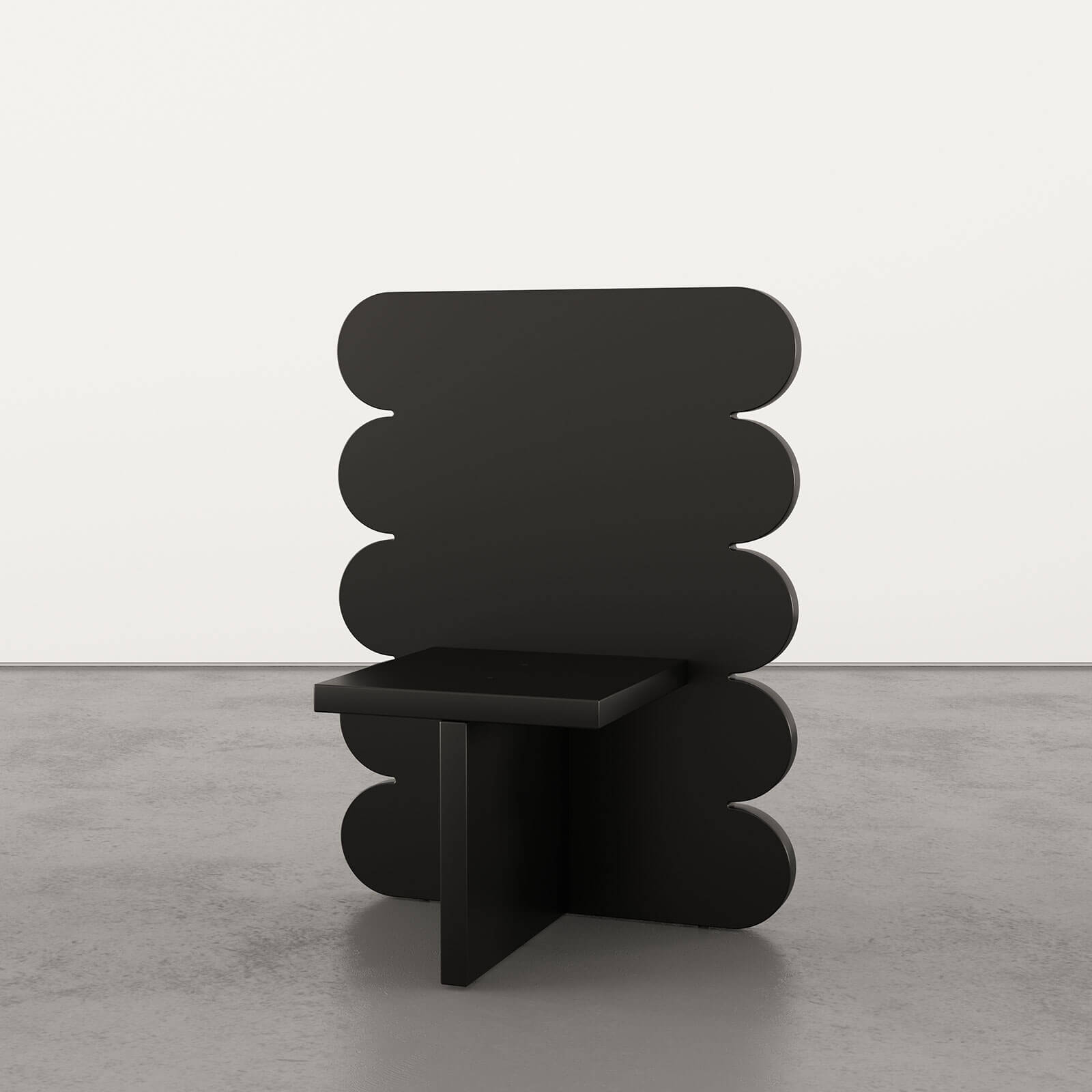
Atelier Caracas for Studio Boheme, ‘N.7 Ettore’ from the Radical Semantics series, 2021
COURTESY: Atelier Caracas
The duo is excited about the possibilities of chance encounter, which has always defined the course of their practice. Take, for example, the very first object they designed: an ashtray called ‘Death Tray’. “My orthodontist had two casts of deformed jaws,” Kowalenko says. “We turned the moulds into an ashtray where the hollow parts of the missing teeth function as cigarette rests.” By comparison, a ‘Kaboom!’ chair is quite tame!
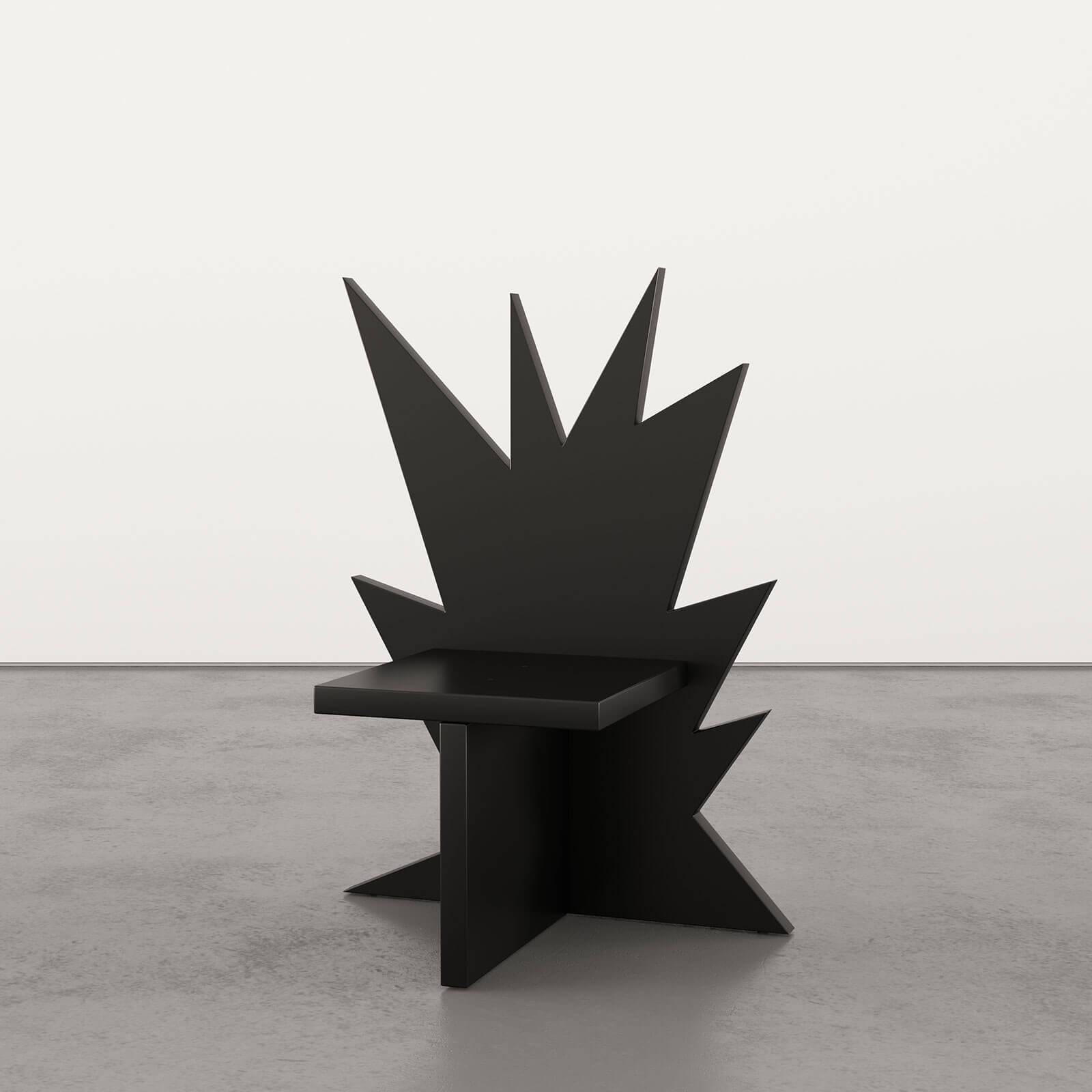
Atelier Caracas for Studio Boheme, ‘N.5 Kaboom!’ from the Radical Semantics series, 2021
COURTESY: Atelier Caracas
